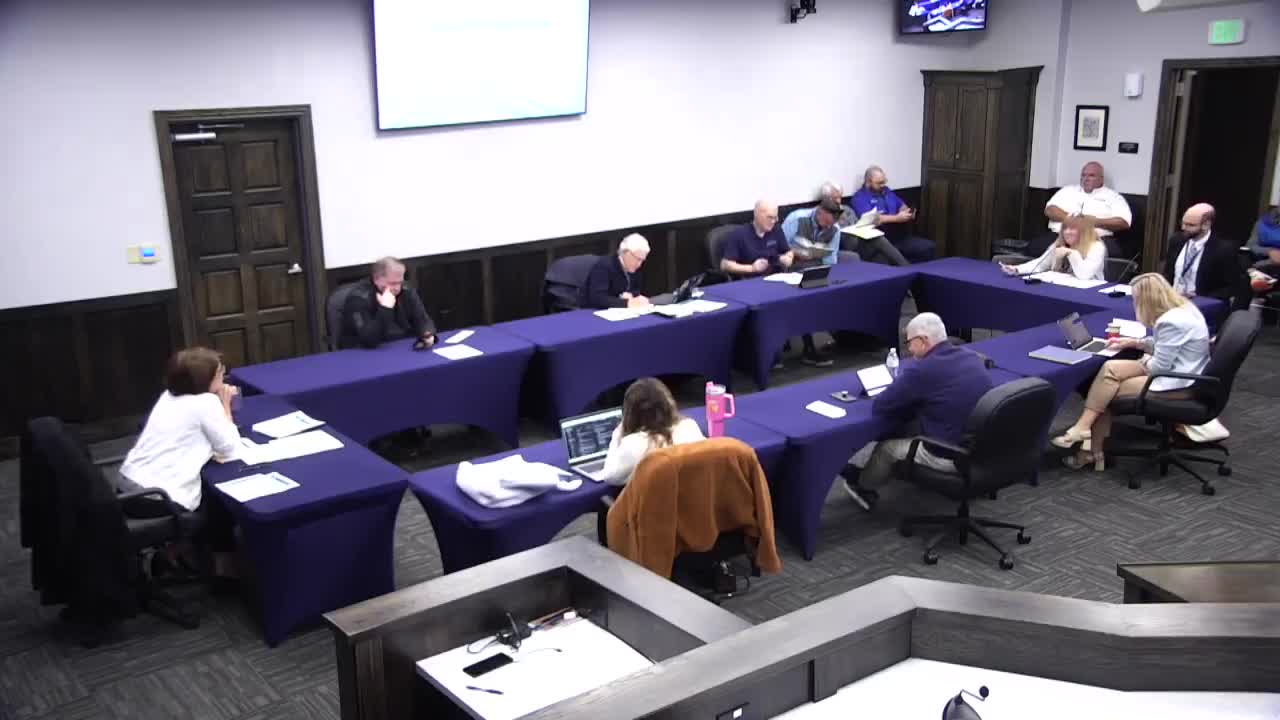Council reviews draft impact fee study and ordinance; councilors weigh implementation timing and square‑footage approach
October 20, 2025 | Idaho Falls, Bonneville County, Idaho
This article was created by AI summarizing key points discussed. AI makes mistakes, so for full details and context, please refer to the video of the full meeting. Please report any errors so we can fix them. Report an error »

Municipal Services staff presented a draft impact fee study and an accompanying proposed ordinance change at the work session, telling council the draft replaces unit‑based residential fees with a square‑footage approach and removes affordable‑housing provisions from the ordinance to address those issues in economic‑development workstreams.
Pam (Municipal Services staff) summarized the draft impact fee study dated Oct. 7 and said consultants incorporated input from the Impact Fee Advisory Committee and city departments. Zach Jones, city attorney, reviewed ordinance language changes and described the residential method: impact fees are now “determined by the climate‑controlled square footage of the structure, not including automobile garage and accessory storage structures.” Jones told council the ordinance was edited to align several definitions with Idaho statutory language and to remove the affordable‑housing provision from the impact fee ordinance itself; staff intends to handle affordability incentives through separate economic‑development discussion.
Pam and Jones said capital improvement plans from departments were submitted earlier and that the draft now reflects items such as two police vehicles per year (10‑year lifespan) identified as impact‑fee‑eligible purchases; staff said those vehicle purchases will receive unique asset identifiers so replacements and insurance recoveries can be tracked to the impact‑fee program. Pam added that the Impact Fee Advisory Committee had expressed concern primarily about housing affordability when the committee recommended moving to dwelling‑unit/square‑foot definitions; committee recommendations dated May 20 remain unchanged.
Councilors discussed timing: staff proposed a Planning and Zoning Commission hearing on Nov. 5, an Impact Fee Advisory Committee meeting in mid‑November, a PNC/public hearing on Dec. 11 and an implementation date in early 2026. Councilor Freeman and others asked whether December 11 might be lost in holiday timing and suggested January dates; staff noted state law requires at least a 30‑day period after publication before an ordinance takes effect. Jones suggested the ordinance could state it becomes effective “30 days from the date the council passes it in accordance with state law,” giving a clear effective date and lead time for developers. Pam recommended publishing the ordinance language and a brochure and conducting outreach through the city website, East Idaho Home Builders Association, the Chamber of Commerce and targeted newsletters.
On a narrow point, Pam and staff clarified that impact fees could fund purchased police vehicles (not leases) tied to service‑level growth: purchases will be tagged in the asset system, have a 10‑year expected service life and insurance recoveries for totaled vehicles will return proceeds to the impact‑fee fund.
Council did not adopt the ordinance at the work session; staff was directed to proceed with the outreach schedule and return the ordinance for the public hearing and vote consistent with statutory notice requirements.
Pam (Municipal Services staff) summarized the draft impact fee study dated Oct. 7 and said consultants incorporated input from the Impact Fee Advisory Committee and city departments. Zach Jones, city attorney, reviewed ordinance language changes and described the residential method: impact fees are now “determined by the climate‑controlled square footage of the structure, not including automobile garage and accessory storage structures.” Jones told council the ordinance was edited to align several definitions with Idaho statutory language and to remove the affordable‑housing provision from the impact fee ordinance itself; staff intends to handle affordability incentives through separate economic‑development discussion.
Pam and Jones said capital improvement plans from departments were submitted earlier and that the draft now reflects items such as two police vehicles per year (10‑year lifespan) identified as impact‑fee‑eligible purchases; staff said those vehicle purchases will receive unique asset identifiers so replacements and insurance recoveries can be tracked to the impact‑fee program. Pam added that the Impact Fee Advisory Committee had expressed concern primarily about housing affordability when the committee recommended moving to dwelling‑unit/square‑foot definitions; committee recommendations dated May 20 remain unchanged.
Councilors discussed timing: staff proposed a Planning and Zoning Commission hearing on Nov. 5, an Impact Fee Advisory Committee meeting in mid‑November, a PNC/public hearing on Dec. 11 and an implementation date in early 2026. Councilor Freeman and others asked whether December 11 might be lost in holiday timing and suggested January dates; staff noted state law requires at least a 30‑day period after publication before an ordinance takes effect. Jones suggested the ordinance could state it becomes effective “30 days from the date the council passes it in accordance with state law,” giving a clear effective date and lead time for developers. Pam recommended publishing the ordinance language and a brochure and conducting outreach through the city website, East Idaho Home Builders Association, the Chamber of Commerce and targeted newsletters.
On a narrow point, Pam and staff clarified that impact fees could fund purchased police vehicles (not leases) tied to service‑level growth: purchases will be tagged in the asset system, have a 10‑year expected service life and insurance recoveries for totaled vehicles will return proceeds to the impact‑fee fund.
Council did not adopt the ordinance at the work session; staff was directed to proceed with the outreach schedule and return the ordinance for the public hearing and vote consistent with statutory notice requirements.
View full meeting
This article is based on a recent meeting—watch the full video and explore the complete transcript for deeper insights into the discussion.
View full meeting